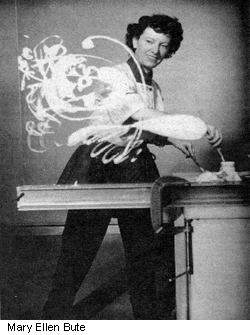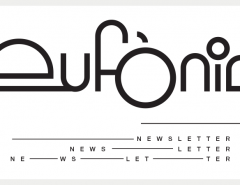Center for Visual Music presents a Centennial Program honoring Pioneer Animator Mary Ellen Bute presented in association with Los Angeles Filmforum and Cecile Starr
A pioneer of visual music and electronic art, Mary Ellen Bute produced over a dozen short abstract animations between the 1930s to the 1950s. Set to classical music by the likes of Bach, Saint-Saens or Shoshtakovich, and filled with colorful forms, elegant design and sprightly, dance-like-rhythms, Bute’s filmmaking is at once formally rigorous and energetically high-spirited, like a marriage of high modernism and Merrie Melodies. In the late 1940s, Lewis Jacobs observed that Bute’s films were «composed upon mathematical formulae depicting in ever-changing lights and shadows, growing lines and forms, deepening colors and tones, the tumbling, racing impressions evoked by the musical accompaniment.» Bute herself wrote that she sought to «bring to the eyes a combination of visual forms unfolding along with the thematic development and rhythmic cadences of music.» (Ed Halter)
Mary Ellen Bute Program, Saturday, Nov. 18, at Los Angeles Filmforum: Known for her pioneering early abstract films (some of which were screened regularly at Radio City Music Hall, New York in the 1930s), Bute made a series of Visual Music films which she called «Seeing Sound.» This Program features nearly all of her short abstract films, including some rarely-seen films, in 16mm prints: Rhythm in Light, 1934; Synchromy No. 2, 1935; Dada, 1936; Parabola, 1937; Escape, 1937; Spook Sport (animated by Norman McLaren), 1939; Tarantella, 1940; Polka Graph, 1947; Color Rhapsody, 1948; Imagination, 1948; New Sensations in Sound, 1949 (RCA Commercial); Abstronic, 1952 and Mood Contrasts. Program curated by Film Historian Cecile Starr. Introduction to the program by Cindy Keefer of Center for Visual Music.





Leave a Reply
Lo siento, debes estar conectado para publicar un comentario.